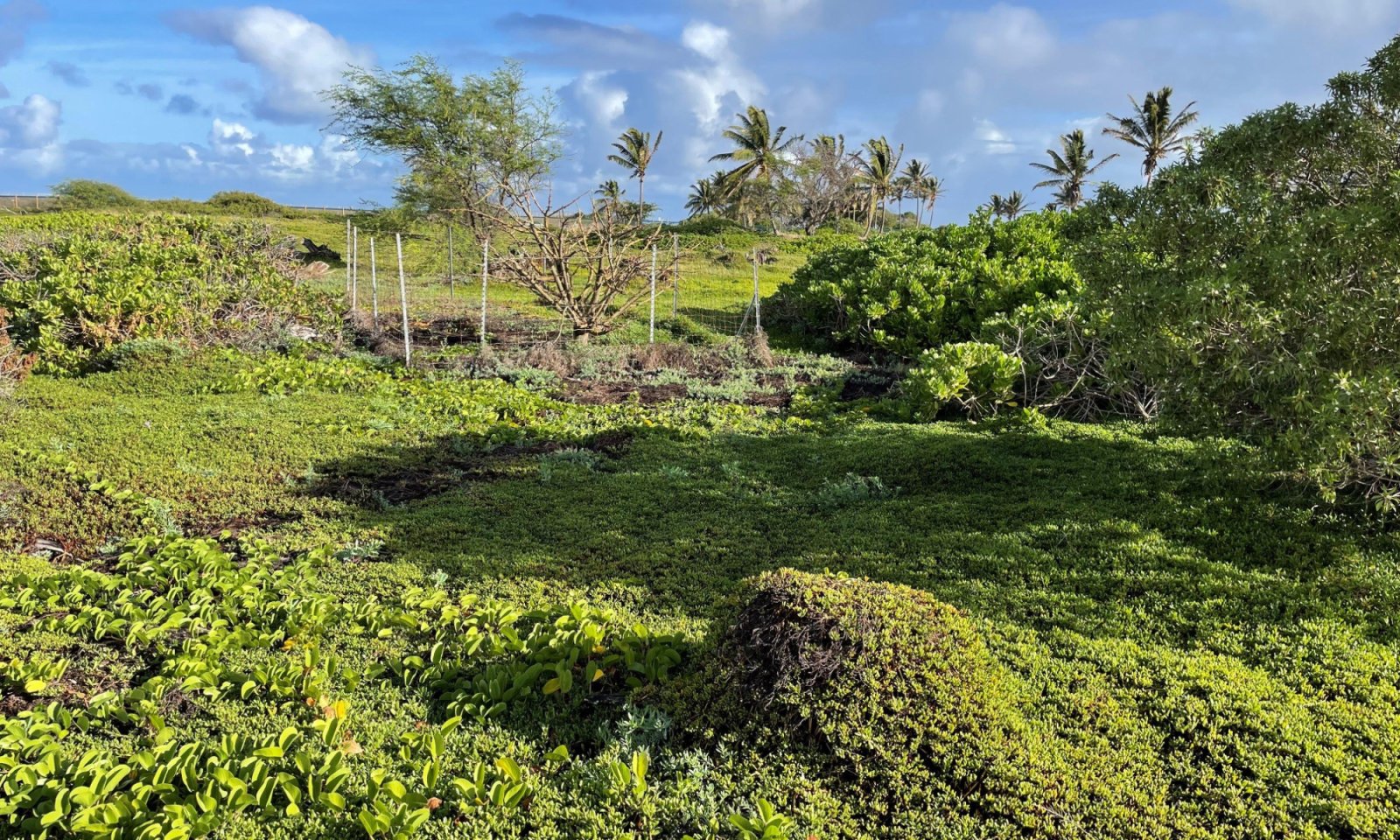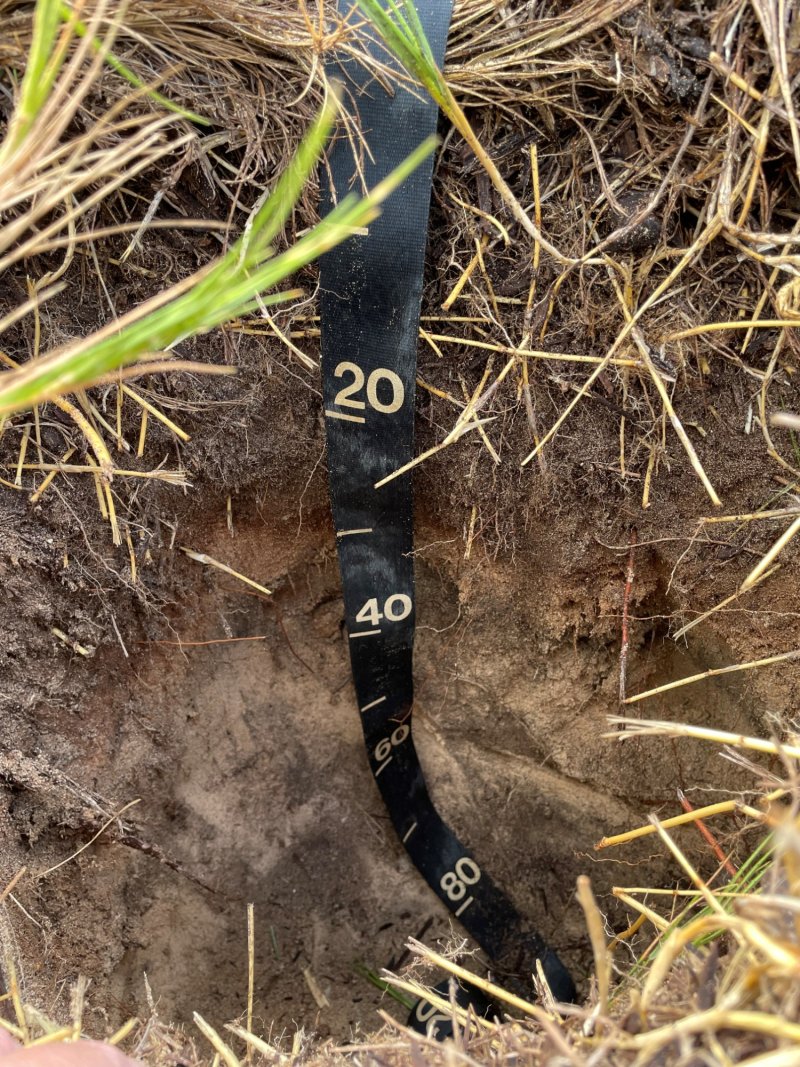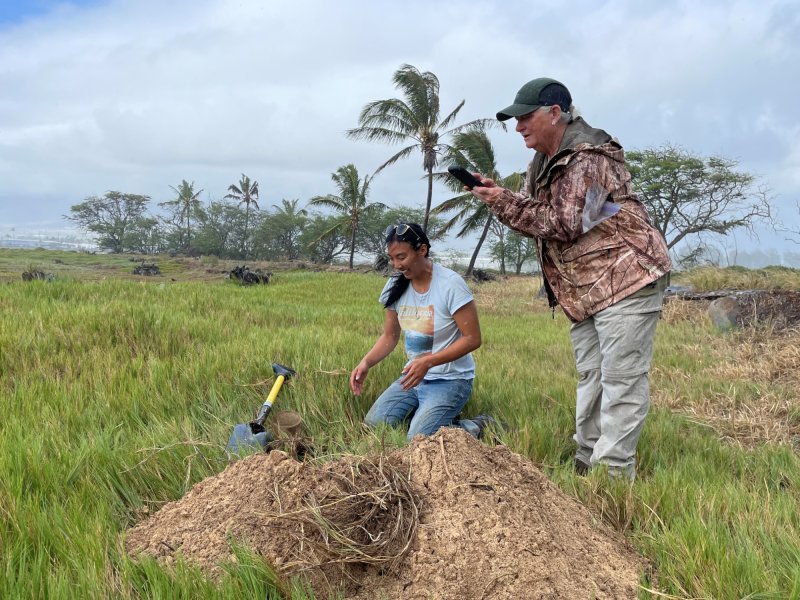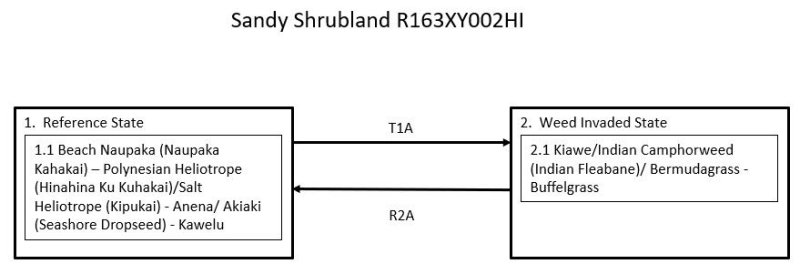

Natural Resources
Conservation Service
Ecological site VX163X01X002
Sandy Shrubland
Last updated: 5/08/2025
Accessed: 05/20/2025
General information
Provisional. A provisional ecological site description has undergone quality control and quality assurance review. It contains a working state and transition model and enough information to identify the ecological site.
MLRA notes
Major Land Resource Area (MLRA): 163X–Alluvial Fans and Coastal Plains
This MLRA is in the State of Hawaii on the islands of Maui, Lanai, Molokai, Oahu, and Kauai. Elevation ranges from sea level to 800 feet (0 to 244 meters) with elevation extremes up to 1,600 feet (488 meters). The terrain is nearly level and gently sloping coastal plains and adjacent alluvial fans. Beneath the unconsolidated sediments are basalt, coral limestone, calcareous sand deposits, volcanic ash, coral sand, and fill. Average annual precipitation ranges from 10 to 40 inches (254 to 1,016 millimeters) with precipitation extremes up to 122 inches (3,099 millimeters) in select places on Oahu and Kauai (Giambelluca et al., 2013). Most of the rainfall occurs from November through March during kona storms that come in from the leeward side of the islands. Average annual temperatures range from 68 to 82 degrees F (20 to 28 degrees C) with little seasonal variation (Giambelluca et al., 2014). Dominant soils are Mollisols, Aridisols, Entisols, and Vertisols with an isohyperthermic soil temperature regime and aquic or aridic (torric) to ustic soil moisture regimes. Vegetation consists of forbs, grasses, and shrubs with some trees. Almost all the plant species typically encountered are introduced species that have become naturalized in Hawaii (USDA-NRCS, 2006).
Classification relationships
This ecological site occurs within Major Land Resource Area (MLRA) 163 - Alluvial Fans and Coastal Plains.
The Aha Moku System, which dates back to the 9th century and has been passed down through oral tradition and generational wisdom, effectively sustains Hawaii's natural ecosystems and environment (DLNR, 2024). This site-specific and resource-based approach balances land and ocean resources essential for fostering healthy, thriving communities. Grounded in Native Hawaiian generational knowledge, the Aha Moku System emphasizes community consultation to prioritize the health and welfare of Hawaii's natural and cultural resources. It is rooted in the concept of 'ahupua'a, the traditional system of land and ocean management in Hawaii. For collaboration, this ecological framework encompasses the following mokus:
Maui Moku Acres: Pu’ali Komohana (7,329), Kula (936), Lahaina (55), and Ka’anapali (25).
Kauai Moku Acres: Kona (4,045), and Puna (49).
Oahu Moku Acres: Ko’olaupoko (2,260), Ko’olauloa (1,463), Waialua (831), Kona (476), Ewa (97), and Wai’anae (28).
Molokai Moku Aces: Kona (1,497) and Ko’olau (103).
Lanai Moku Acres: Lahaina (817).
Ecological site concept
This ecological site supports a mix of forbs, grasses, shrubs, and, in the Weed Invaded State, trees. It occurs on coastal beaches above high tide and on sand hills, primarily on the “neck” between east and west Maui, on the northwest coast of Molokai, the westernmost coast of Kauai, and small areas on Oahu and Lanai. A protected example is on The Nature Conservancy’s Mo`omomi Preserve on the northwest coast of Molokai. Much of the total area has been in agriculture, primarily for sugarcane, or has been developed for urban use (USDI-USGS, 2006).
The central concept of the Sandy Shrubland is of somewhat excessively to excessively drained, moderately deep to deep soils formed in calcareous sand at elevations from sea level to 650 feet (0 to 198 meters) (USDA-SCS, 1972). Annual air temperatures and low rainfall create warm (isohyperthermic), dry (torric) and seasonally dry (ustic) soil conditions. Average annual precipitation ranges from 15 to 39 inches (381 to 991 millimeters), although the small area on Oahu can receive up to 73 inches (1,854 millimeters) (Giambelluca et al., 2013). Vegetation consists of forbs, grasses, shrubs, and some trees. These growth forms can form unique communities within the ecological site that are smaller than the resolution possible at the scale of the soil map.
Associated sites
| VX158X01X002 |
Isohyperthermic Torric Naturalized Grassland Kiawe/buffelgrass (Prosopis pallida/Pennisetum ciliare) The Isohyperthermic Torric Naturalized Grassland Ecological Site has a similar climate to this ecological site, but its soils are very different. It does not have sandy soils, has more water-holding capacity, and supports a different set of plant species. |
|---|---|
| VX163X01X003 |
East Aspect Isohyperthermic Naturalized Grassland The East Aspect Isohyperthermic Naturalized Grassland Ecological Site has a moister and slightly cooler climate than this ecological site. It does not have sandy soils and has greater water-holding capacity. It has a different suite of plant species adapted to a moister environment. |
| VX163X01X005 |
Aquic Coastal Wetland The Aquic Coast Wetland Ecological Site has a similar climate to this ecological site, but it has wet, poorly and very poorly drained soils and, unless artificially drained, supports wetlands rather than dry rangeland. |
Table 1. Dominant plant species
| Tree |
Not specified |
|---|---|
| Shrub |
(1) Scaevola sericea |
| Herbaceous |
(1) Heliotropium curassavicum |
Legacy ID
R163XY002HI
Click on box and path labels to scroll to the respective text.
Ecosystem states
| T1A | - | Reference State (1) transitions to the Weed Invaded State (2) by reduction or loss of native species due to grazing and browsing by introduced or domestic ungulates and by gradual invasion by introduced plant species. It also occurs when agricultural land is abandoned. |
|---|---|---|
| R2A | - | The Weed Invaded State (1) may be restored to the Reference State (2) by excluding all ungulates with a suitably designed fence. Although all introduced vegetation must eventually be removed, it is probably desirable to do so gradually to protect against wind erosion. Use of mulch is also recommended to hold the soil until native plants have been reestablished. Irrigation will probably be necessary in the early stages of native plant reestablishment, as the soils drain very rapidly and have low water holding capacity. |



